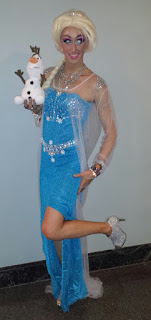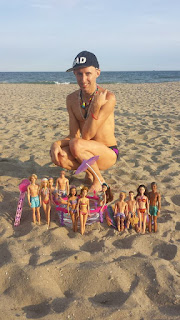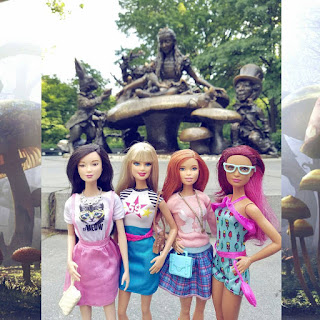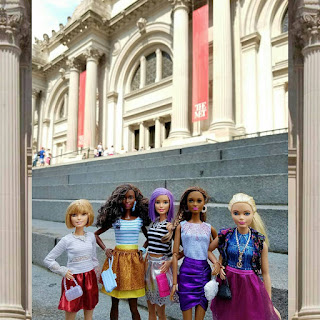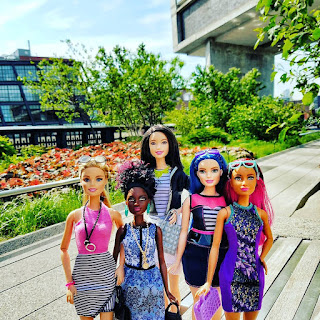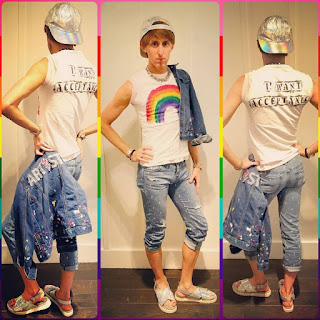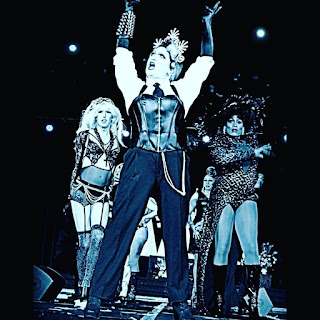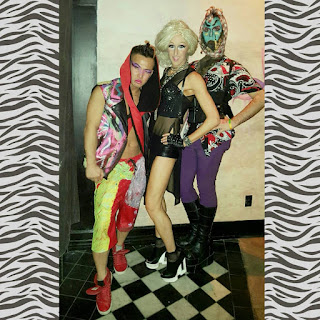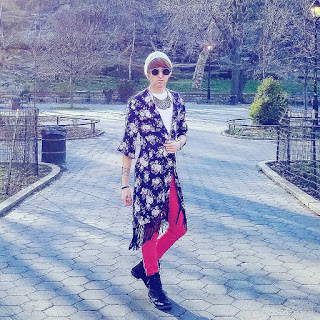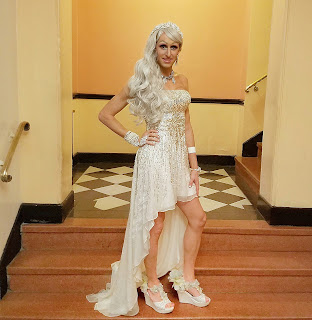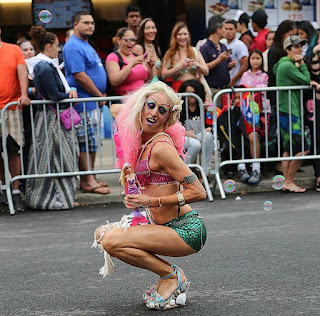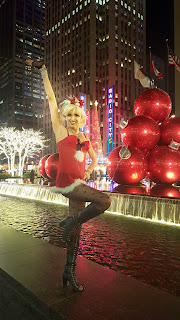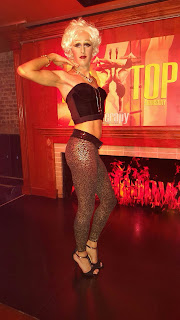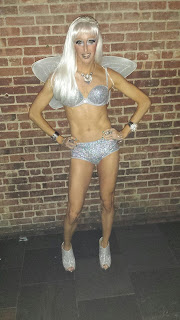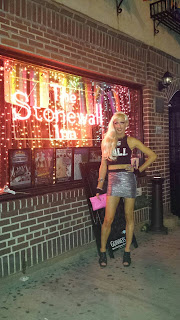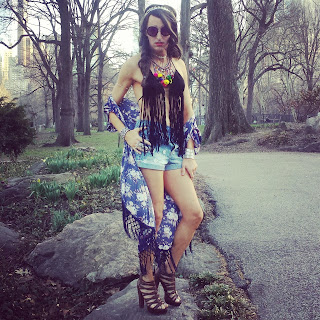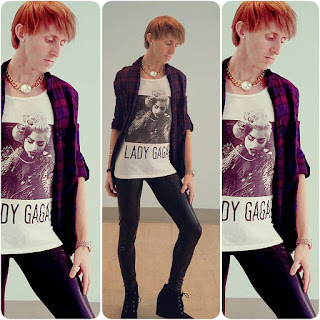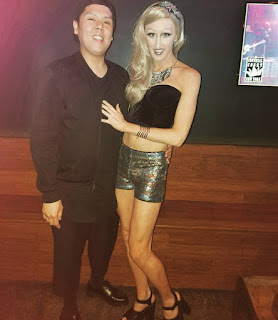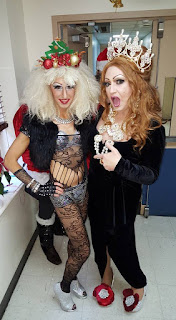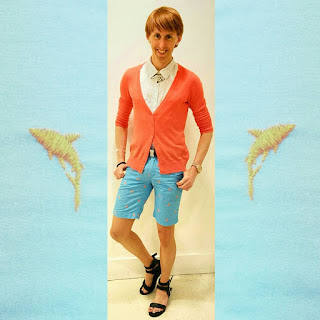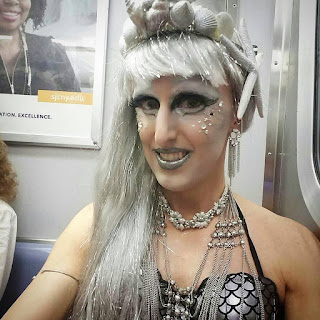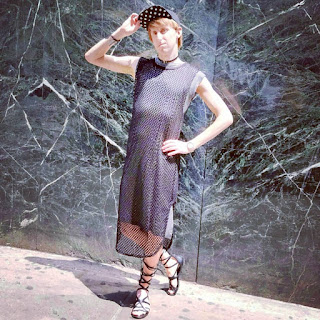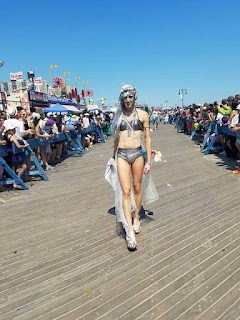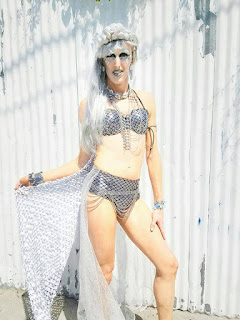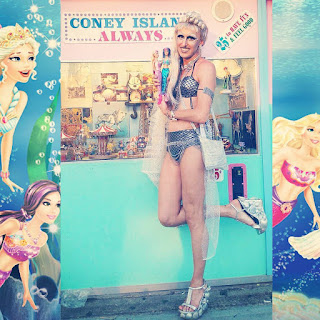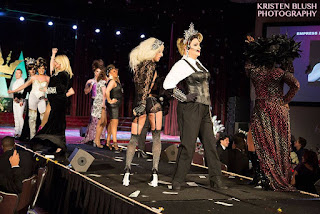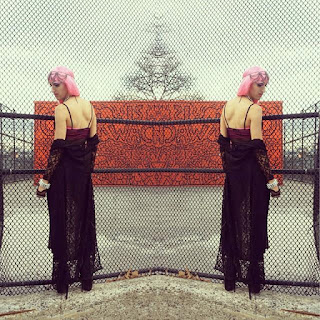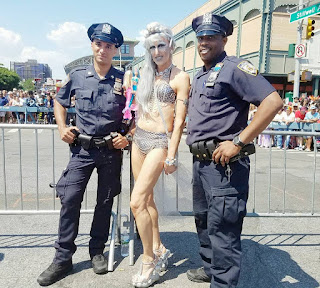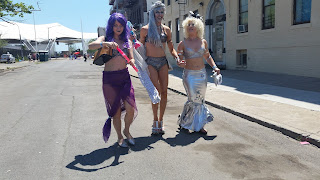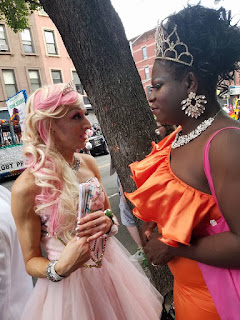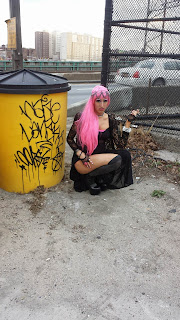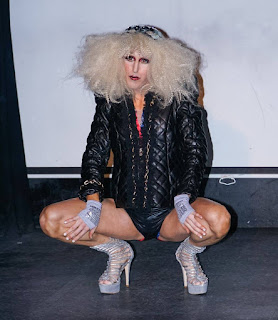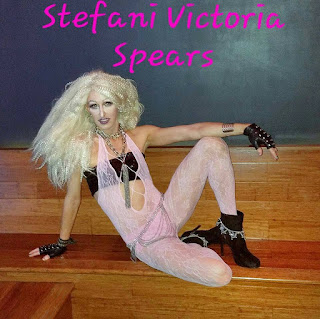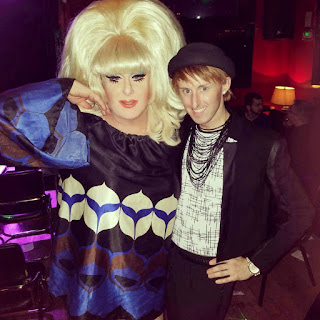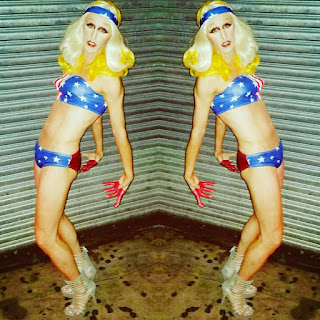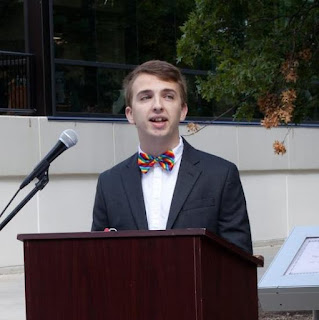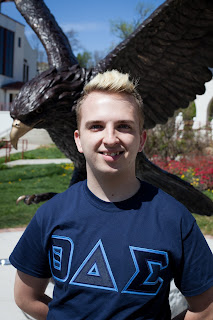Categories
Dragging Species?
Harry and Austin’s conversation with Anuj Vaidya continues the Draggedy project by exploring the themes of not only gender, but also nationality and species, in drag. Anuj discusses his work from his first experience of dragging Bollywood actress Helen to his most recent work, which finds drag as a tool to discuss the radical possibilities of imagination.

- Anuj as Piya Tu in Bad Girl with a Heart of Gold.

- Anuj as Ruby in Bad Girl with a Heart of Gold.
Anuj explains his drag history as starting with performances to the music of Helen, a popular Bollywood actress from the 1950s through the 1970s, for his family in his home nation of India. When he immigrated with his family to the United States at the age of 17, Anuj would retain in his mind the image of Helen as a symbol of his home nation and childhood, and would eventually end up performing drag as Helen yet again during his MFA program at the School of the Art Institute in Chicago.
Nationality in Drag and in Bollywood

- Anuj as Monica in Bad Girl with a Heart of Gold.
After immigrating to the United States and dealing with maintaining his own Indian identity in a new setting, Anuj looked back to the work of his childhood idols such as Helen in order to deconstruct the ways in which we look at identity and nationality. This became part of his MFA work, in which he used five characters portrayed by Helen in order to create a film which addressed the issue of nationality in an exceedingly globalized world. Anuj also found during this process that not only was he himself dragging Helen in this project, but that Helen herself had been dragging a specific type of Westernized femininity in each of the films she had portrayed. Drag was thus not entirely about gender, but about all different sorts of identity categories.
Dragging Species?
This conceptualization of drag as playing with different forms of identity would be carried through the rest of Anuj’s drag work, with the focus moving from nationality to issues of ecology and species. This change in theme reflects the evolution of Anuj’s own interests, as he explains that his drag is affected by what is happening for himself in the here and now, as all his art projects are. As his questions of national identity began to be resolved throughout his time in school, more questions surrounding ecology—including an interrogation of what it means to be human and how we all fit into the natural world—began to pop up for Anuj. This would come to influence the next pieces of Anuj’s work, as drag moved beyond gender and nationality but also to species. Anuj’s next project focused on ecological themes as told through the eyes of Miss Piggy, dragged by Anuj himself.

- Anuj as Miss Piggy in Diane Sawyer Live: An Exclusive Interview with Miss Piggy. Here, Miss Piggy is retelling the dream which motivated her to start her ecological film.

- Anuj as Miss Piggy in Diane Sawyer Live: An Exclusive Interview with Miss Piggy. Here, Miss Piggy rides a bike to power her camera for her most recent film project.
Anuj’s work as Miss Piggy explored themes of ecology and nature, interrogating the relationship between humans and the natural world in which we exist while also exploring the very theme of what it means to be human and what it means to be animal. This project also explored the relationships humans have with their environment in its cinematographic techniques, using only renewable, “green” energy sources to power the recording equipment, including hand cranks and bicycle power.

- Part of the dream sequence from Diane Sawyer Live: An Exclusive Interview with Miss Piggy, in which several culture’s mythologies of nature converge.
The Radical Possibilities of Drag

- Anuj and Praba dragging their own radical versions of larvae in Larval Rock Stars.
Anuj’s drag work continued to evolve after his work as Miss Piggy, and continued to explore more ecological themes. His most recent work, Larval Rock Stars, is a collaboration with Colombian diasporic artist Praba Pilar, and focuses on the radical possibilities within each of us as the two artists drag themselves as literal larvae. In this way, the form of drag is dissected and presented to the audience as the art of becoming that which we yearn to be—as the artists are literally dragging larvae, a metaphor for the transformative power of our own selves. This is ultimately what drag is to Anuj: the radical possibilities of becoming anything which we aim to be, and the state of being in this transformation for all of our lives.

- Anuj and Praba in Larval Rock Stars, posing as larvae who have come to inform us that the human experiment was a failure.
To keep up to date with everything that Anuj is working on, please be sure to check out his website by clicking here. His films, Bad Girl with a Heart of Gold and Diane Sawyer Live: An Exclusive Interview with Miss Piggy can also be found on Anuj's website. Be sure to follow Harry and Austin on Twitter at @hhawk and @rainbowsquirtle, respectively. And be sure to follow Talking About Everything and The Draggedy Project on Stitcher Radio and iTunes! Keep checking back to www.draggedy.com for more episodes, pictures of gender performers, and links to more information about the artists we cover.
A conversation with Sal Virelli about the creation and development of Villinda Vile.
Sal is a horror drag performer from Michigan and is 19 years old and is a polished entertainer and a rising star in the drag community. He created Villinda and other drag personas, as well as creating clothing of his own design and acting in community theater.
Sal describes a dark past with which he used to build and embellish the characters Linda and Villinda. Born and raised in Michigan Sal has explored community theater, sewing and fashion.
Timothy French is a dancer, choreographer, and fashion merchandiser out of New York City whose drag persona is Stefani Victoria Spears.
Drag Persona Origins


Influences - External and Internal
Looking to the Future
To keep up to date with everything that Timothy is working on, follow him on Facebook, Instagram, and Twitter at poshtwinkboi. Be sure to follow Harry and Austin on Twitter at @hhawk and @rainbowsquirtle, respectively. And be sure to follow Talking About Everything and The Draggedy Project on Stitcher Radio and iTunes! Keep checking back to draggedy.com for more episodes, pictures of gender performers, and links to more information about the artists we cover.
More images of Timothy & Stefani
Harry’s and Austin’s first conversation about the scope of The Draggedy Project.
They discuss the differences between how drag is most generally portrayed in mainstream media and the radical possibilities which drag presents. The conversation also focuses on some of the evolutions of drag as an art form, including its movement from small-scale performances at gay clubs to wider audiences in theatres and mainstream media, such as RuPaul’s Drag Race.
The Power of Drag
Harry and Austin start their discussion by talking about the possibilities of drag, especially in how drag is able to comment on several different social issues apart from just gender. Austin believes that drag is able to explore all kinds of themes, including what it means to have a national identity, what it means to grow older, and what it means to be human in general.
Word Choice
Harry and Austin then discuss some of the terminology used in the world of drag, debating the terminology of “drag” between “gender artistry” or “gender performance,” and the politics of using such terminology within circles of gender performers.
Learning about Drag
After discussing some of the current trends in the drag scene, Harry and Austin each discuss the first time they were fully aware of the art of gender performance. First drag or gender performance experiences are almost always memorable, and there is no difference for the first drag memories of Harry and Austin. Sharing these memories leads to a discussion on the history of drag, from far-away history to more modern media history.
Trends in Drag
The conversation then turns back to more modern trends in the world of gender performance, focusing on different types of gender portrayals—between ultra-glamorous looks to everyday, exceptionally mundane looks. This turns to a discussion of the binary between the authentic and the inauthentic—can authenticity truly be achieved when using seemingly inauthentic means such as make-up, padding, and clothing choices?
The conversation closes with a discussion of what The Draggedy Project entails—a discussion with gender performers about what their intentions are in their gender performances, the origins of their performance personas, and how the culture of gender performance interacts with the culture in which we live today.
Thanks
Be sure to follow Harry and Austin on Twitter at @hhawk and @rainbowsquirtle, respectively. And be sure to follow Talking About Everything and The Draggedy Project on Stitcher Radio and iTunes! Keep checking back to www.draggedy.com for more episodes, pictures of gender performers, and links to more information about the artists we cover.
Austin writes: These performances come at a time influenced by video-sharing sites such as YouTube and the social graph in which performance itself has become elevated and idealized. This idealized form of performance also involves a high level of authenticity, which has become necessary for the popularization of any performer in today’s digital age. The gender performer has a unique role in this phenomenon, in that they both posses a high level of performance quality and are authentic in their self-expression, despite the assertion that gender performance is an attempt to “imitate.”
[Our] conversations shall focus not only on their performance choices and how such choices reflect public ideology surrounding gender, but also on how such choices reflect ideas surrounding other social constructions. These conversations will also attempt to investigate how the personal lives of gender performers, as well as the culture of our time, interact to create the final performance as presented to an audience.


